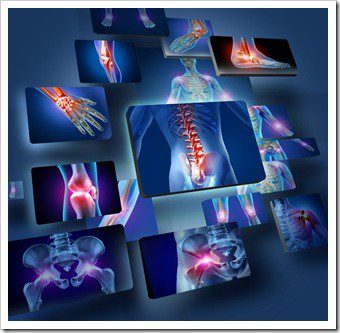 The era of replace and buy new is in full swing and has swung so far to the right that we are now applying this principle to our health. In previous generations we understood the premise “built to last” and maintained the high quality of the product until it was past onto its next owner. Scarily enough our present generation would rather buy a new body part than maintain the one they have. Let’s hope that this trend does not continue by us ordering our new parts in flat pack from IKEA!
The era of replace and buy new is in full swing and has swung so far to the right that we are now applying this principle to our health. In previous generations we understood the premise “built to last” and maintained the high quality of the product until it was past onto its next owner. Scarily enough our present generation would rather buy a new body part than maintain the one they have. Let’s hope that this trend does not continue by us ordering our new parts in flat pack from IKEA!
Scary State of Affairs
Over the last few decades the number of total hip and knee replacement surgeries have been rising at an alarming rate. In the United States for total hip and replacement surgeries have increased more than 50% and 170%, respectively. Europe is also seeing similar rises for these procedures with some the northern European countries reporting rises of between 170% and 500% over the last decade alone.
Many suggest that these rises are primarily related to the increase age of our population combined with accessibility and advancement of surgical procedures. Of course, for those with unrelenting, daily pain these radical surgeries can appear to be a blessing. However with the level of risk associated to the procedures themselves combined with the fact that the occurrence of infections originating in the hospital is continuing to rise it is important that we start taking actions today to help prevent these types of surgeries from continuing to rise in popularity.
Most replacement surgeries are done when patient reaches the point of severe and unrelenting pain caused by degenerative joint disease, which is also called osteoarthritis. The hips, knees, and ankles are all weight bearing joints. These joints are big and strong and have many surfaces on which to distribute the substantial mechanical loads which are placed on them throughout the day. Unfortunately, these joints may not last forever and similar to many living systems when their age starts show they begin breaking down. If this breaking down process progresses the joint can become necrotic at which point a replacement is almost inevitable. However, there is significant research to suggest that this breaking down process can at the very least be slowed down and in many cases it can actually be reversed through restoring normal movement to the joint and then through using regular exercise and chiropractic care.
Warning Label Factors
Chronic poor posture is a significant factor that results in abnormal movement patterns in these large joints and leaves them susceptible to degeneration. Unfortunately, our body doesn’t come with an instruction manual. So as time goes on, the inefficient habits we develop as children and teenagers can become permanent. People slouch, they let their abdominal muscles sag, they stand with all their weight on one leg, and their heads stick out in front rather than being centered over their chests. One result is chronically tight and painful neck, shoulder, and lower back muscles. Another result is chronically uneven distribution of the weight of the body, ultimately causing restricted movement and degeneration of hips and knees.
Poor dietary habits can also be a significant factor. These large joints actually produce their own lubricating fluid, however certain dietary deficiency can result in key nutrients not being available and thus poor production of the lubricating fluids. Lack of proper joint lubrication leads to osteoarthritis. Osteoarthritis leads to pain when used for exercise.
Lack of regular exercise inhibits normal joint motion and normal joint nutrition and lubrication, leading to the development of degenerative joint disease. When you add up faulty bio-mechanics, lack of a healthy diet, and lack of proper exercise, the result is a prescription for chronic hip and knee problems.
High Quality Assurance
The best time to start addressing these issues when you’re young and have healthy joints. As they say an ounce of prevention is worth a pound of cure. That doesn’t mean that you can’t get started at any age because you can. It simply means that starting healthy habits in your lifestyle is easier to achieve when you are young. When you are 9 or 90 the best time to begin making healthful changes is right now.
Chiropractic care directly helps improve a person’s bio-mechanics and posture. Proper alignment and function helps the body to adapt and recover faster, plus help convert good food to the best fuel possible.
For most of us, the best way to prevent the need for a hip or knee replacement is to take consistent, healthy actions on our own behalf. If a hip or knee replacement turns out to be the solution make sure to call our office so we can help you utilize all of these healthy actions to help ensure a quick recovery and continued good health from this point onward.
For Your Health,
Dr. Che Connelly
